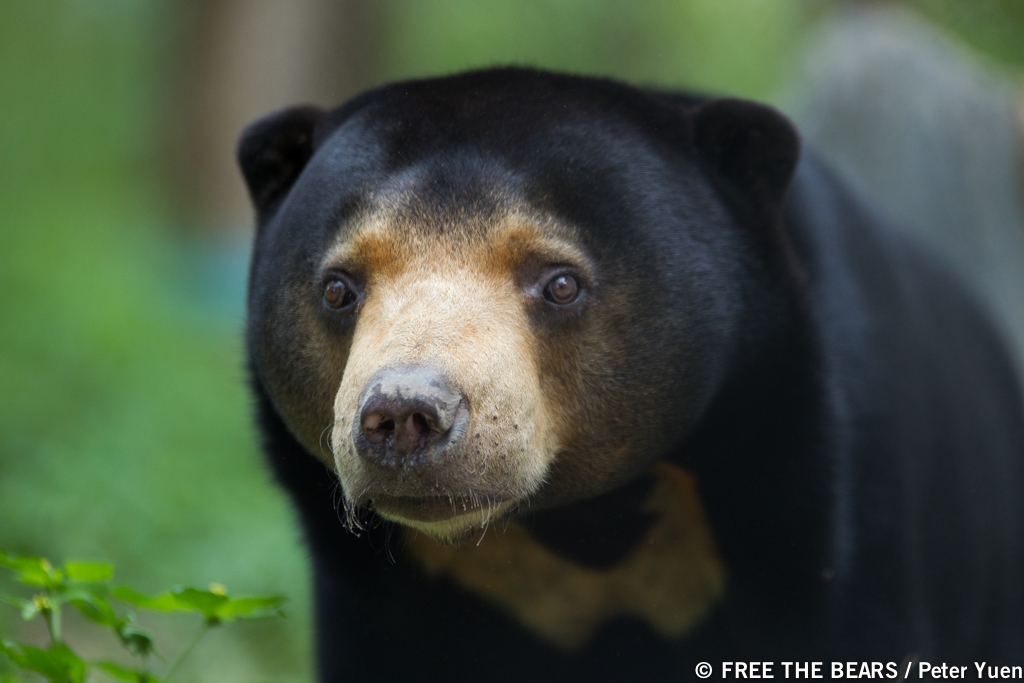
Sun bear_H malayanus_Cambodia Bear Sanctuary Cambodia, rescued from illegal trade_Free the Bears
Helarctos malayanus
This is the smallest bear species, known for its arboreal agility. Its range is restricted to Southeast Asia, both the mainland and the islands of Sumatra and Borneo. In mainland Southeast Asia it occurs sympatrically with Asiatic black bears, north of the Isthmus of Kra on the Malay Peninsula (where climatic patterns change dramatically). Although the chest marking may look like a sun in some individuals, the common name of this species actually arose from the fact that it was named for a specimen collected near the equator (near the “hot sun”) on Borneo.
Since early times, native people, and later collectors, kept cubs of this dog-like bear as pets. That remains a threat today, along with snaring for sale of bear parts, and habitat loss, especially due to conversion of forests to large commercial plantations of oil palm and rubber. These threats have caused populations to decline across its range.
Taxonomy: Helarctos malayanus [Raffles 1821]: This bear was named by Sir Thomas Stamford Raffles, an Englishman stationed in Sumatra who hired two younger Europeans to collect some animals around the island. They bought a live bear that was a pet in a village. Raffles kept it as a pet, making it the only type specimen described from a pet bear. Although Raffles gave it the generic name Ursus, that was superseded a few year later by a subsequent specimen collected on Borneo, where it was given the name Helarctos, meaning sun bear [Latin], because it was collected near the hot sun of the equator. [See separate page: Discovering and Naming Bear Species for Science.] Given that this species is often called the Malayan sun bear, it is the only bear species in which the binomial Latin name matches the common name.
Bears on Borneo are recognized as a subspecies, H. m. euryspilus, (where this subspecies name means “wide birthmark”, referring to the prominent mark on the chest), distinct from the nominal form, H. m. malayanus. The markings on the chest are highly variable among individuals, with no distinction between the subspecies. The Bornean form was distinguished as a subspecies because it is significantly smaller in stature, with a proportionately smaller skull (but relatively large teeth). However, recent studies have not found a genetic difference among sun bears on Borneo, Sumatra, and Peninsular Malaysia (the Sundaic region, or Sundaland), yet there is a clear difference between this genetic clade and other sun bears on mainland Southeast Asia, indicating a divide between the Sundaic and more northern lines that dates to the Middle Pleistocene. Geneticists have not resolved whether the mono-specific genus name should be retained, or if this species should be included in Ursus.
Distinctive characteristics: Sun bears are the smallest of the 8 living bear species. Adults weigh between 30 and 90 kg, with males being about one third larger than females, and the Bornean subspecies weighing around 40% less (with corresponding smaller skulls) than its mainland and Sumatran counterparts. Sun bears have many disproportionately large physical features, which give them great strength relative to their body size. The skull is relatively much wider than in other bear species, with a short snout. The canines are disproportionately large, in fact as large as those of polar bears, which are 5–10x larger in body size, and use their canines to prey on seals. The structure of the jaw and surrounding muscles and teeth give sun bears a powerful bite force for their size. Sun bears also have the longest tongue of any bear species, reaching to up to 46 cm. These three morphological characteristics (large canines, jaw muscles, and tongue) are all adaptations for extracting insects (especially stingless bees) from wood (they chew the wood, and insert their tongue). Their claws are long and sharp, comparable in size to the claws of a brown bear. Their paws are large, with naked soles, and the front legs are bowed, with the paws angled inwards. The claws, paws, and legs are all well-adapted for climbing. Their ears are small and round. Their coat is shiny, black and short. The muzzle is covered with beige hairs that often reach to above the eyes. Sun bears usually have a bright chest patch, deep yellow to orange in color, although varying among individuals in terms of size, shape, and color, and is even absent in some cases. The individually-distinctive chest patch stays the same for the life of a bear. The purpose of this distinctive patch is still not known.
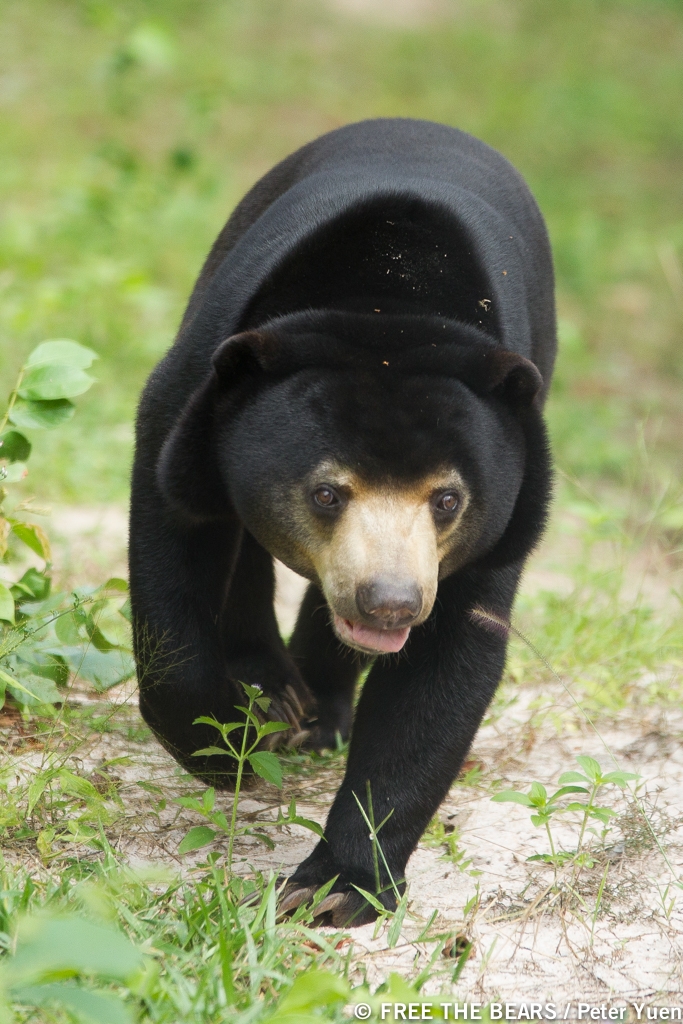
Sun bear_H malayanus_Cambodia Bear Sanctuary Cambodia_rescued from illegal trade_sleek fur inward pointing front paws_Free the Bears_02
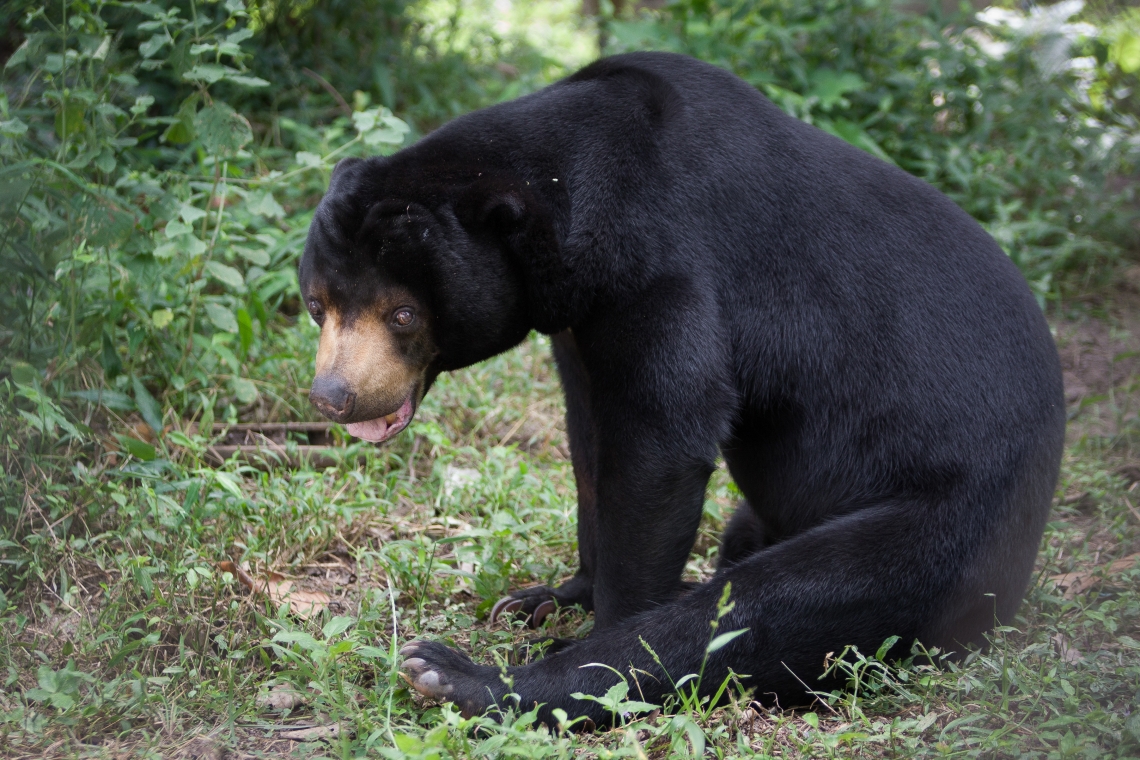
Sun bear_H malayanus_Cambodia Bear Sanctuary Cambodia_short fur small ears_Free the Bears
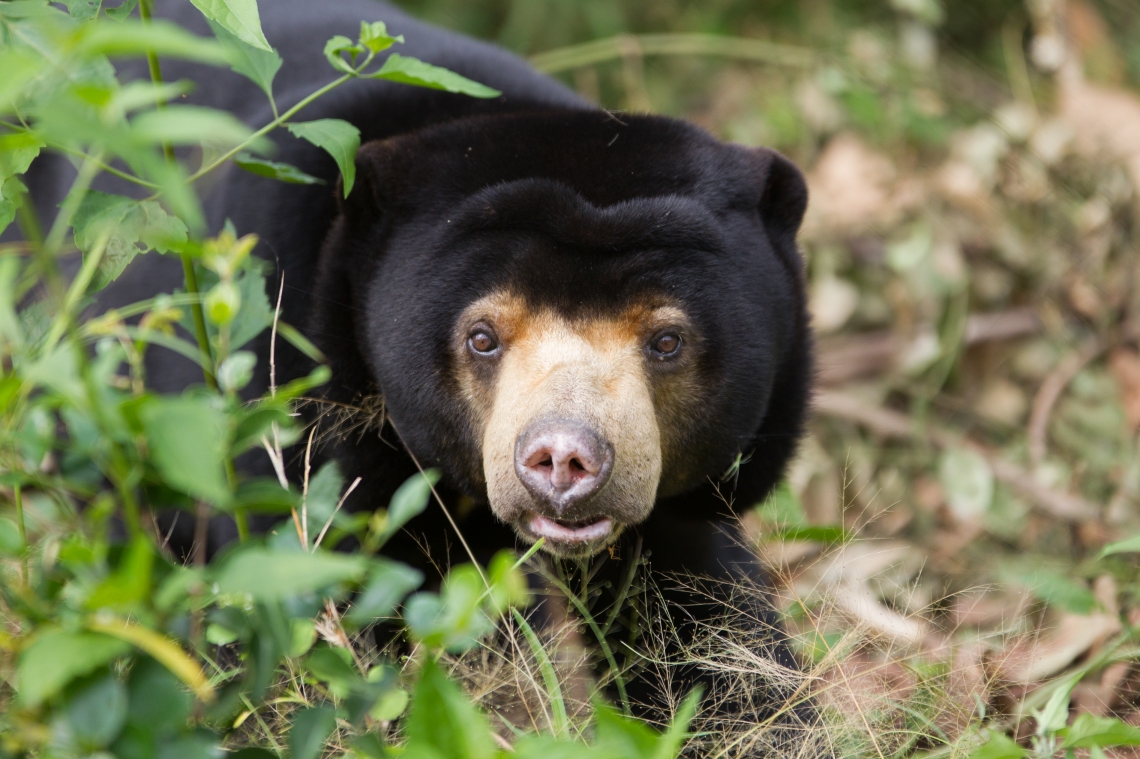
Sun bear_H malayanus_Cambodia Bear Sanctuary Cambodia_light muzzle extending to eyes short ears_Free the Bears
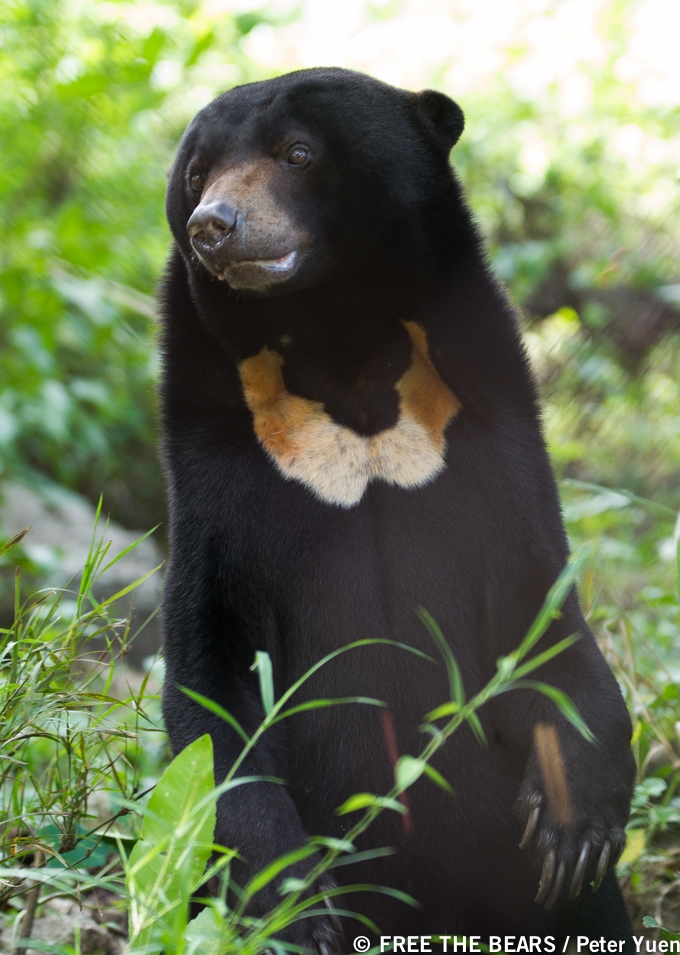
Sun bear_H malayanus_Cambodia Bear Sanctuary Cambodia_rescued from illegal trade_light chest blaze dark face_Free the Bears
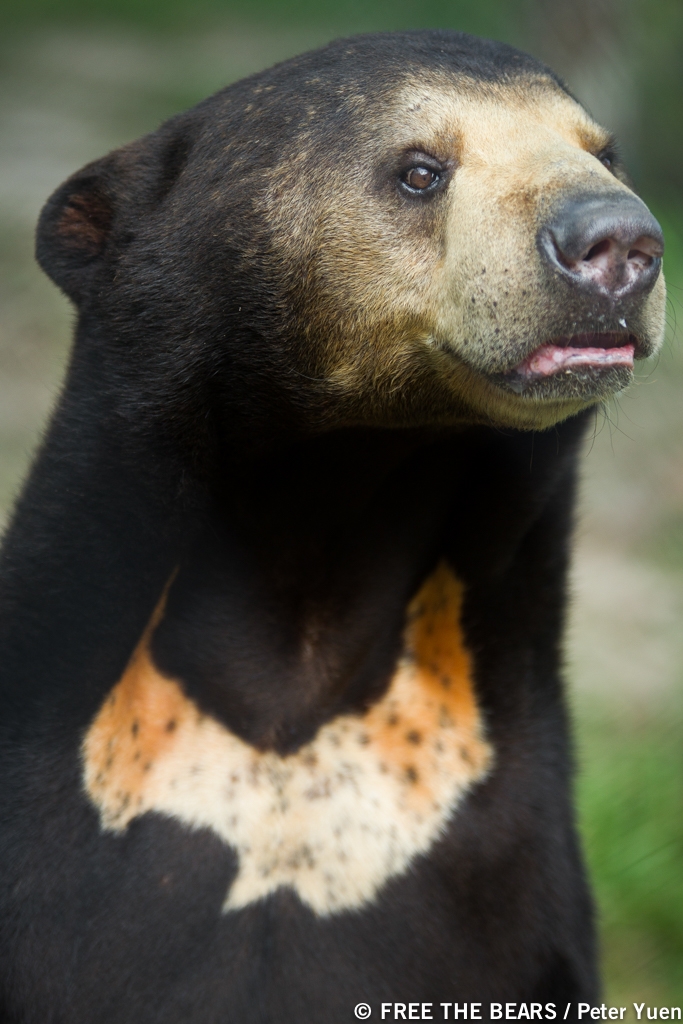
Sun bear_H malayanus_Cambodia Bear Sanctuary Cambodia_rescued from illegal trade_speckled chest blaze light face_Free the Bears
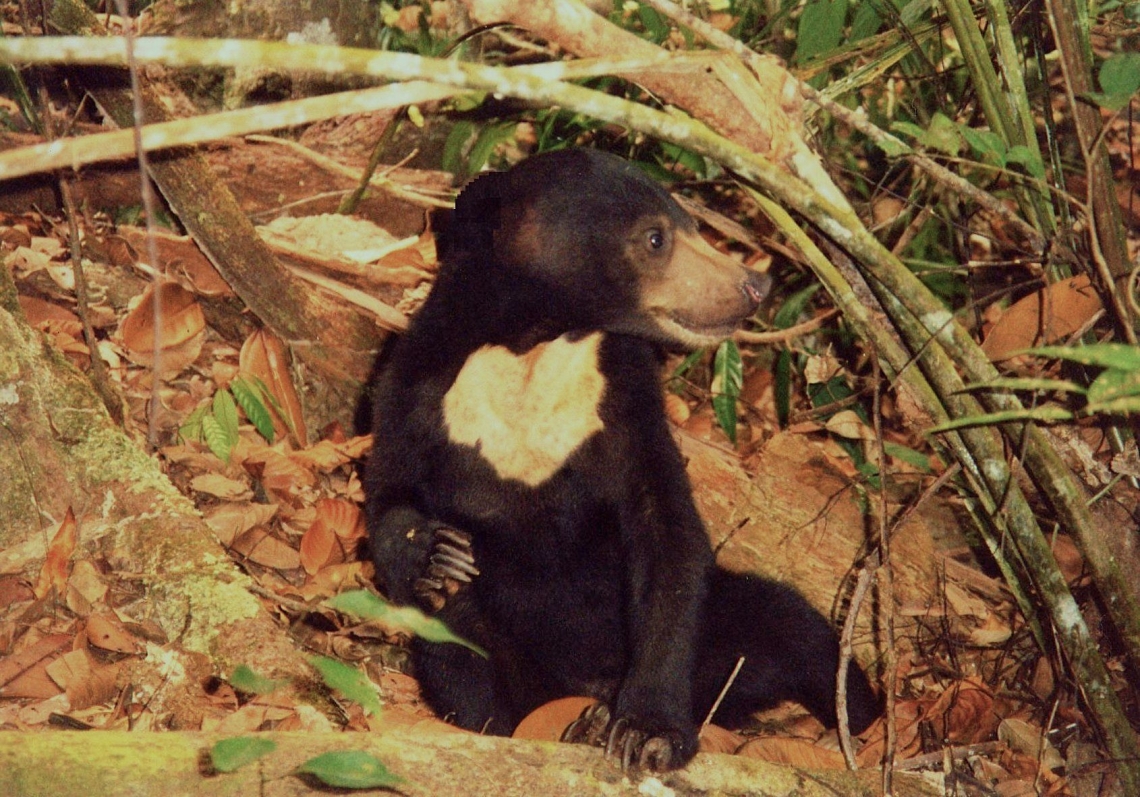
Sun bear_H malayanus_Kalimantan Indonesia_full sun chest mark_G Fredriksson
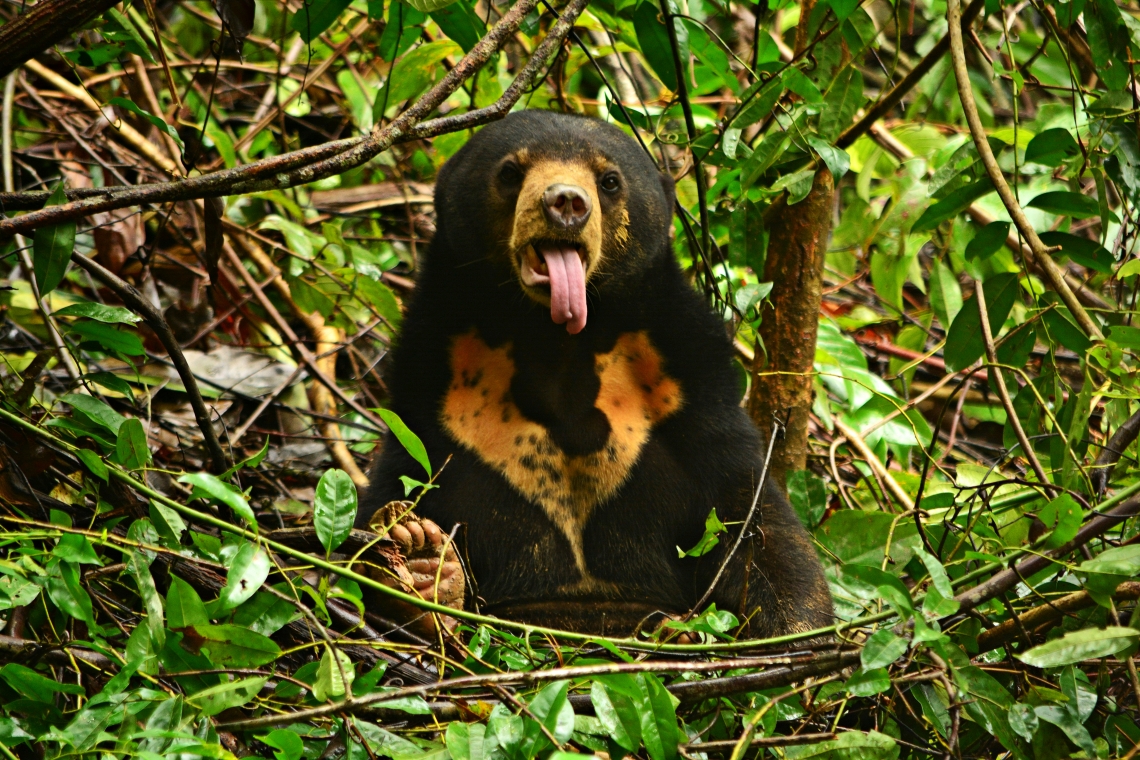
Sun bear_H malayanus_Sabah Malaysia_Bornean Sun Bear Conservation Centre captive_large orange chest mark_LM Chiew
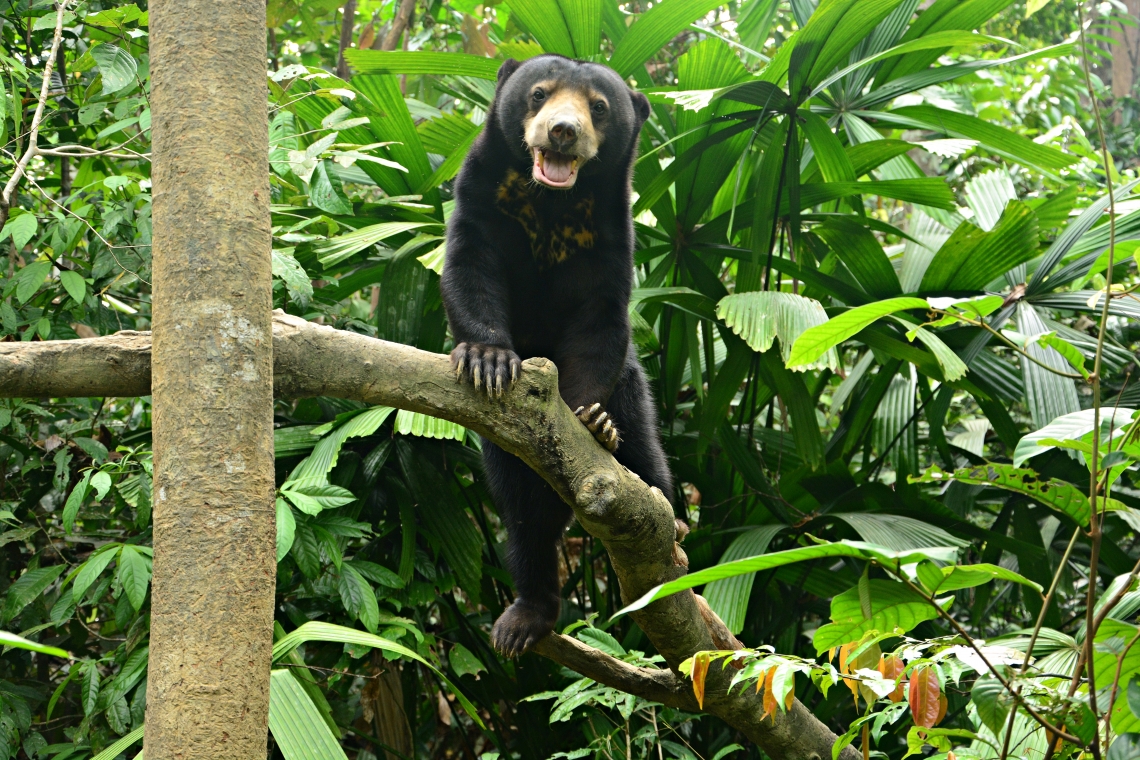
Sun bear_H malayanus_Borneo Sun Bear Conservation Centre_dark chest mark_Yen Wah Seng BSBCC
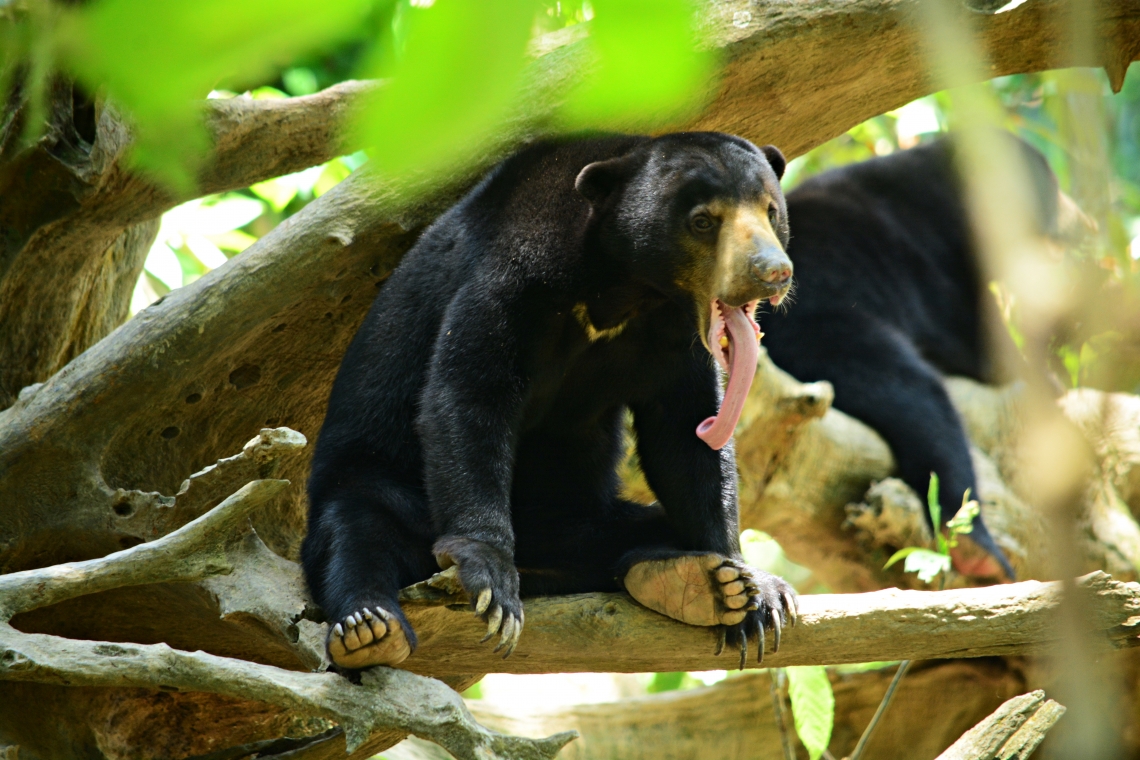
Sun bear_H malayanus_Sabah Malaysia_Bornean Sun Bear Conservation Centre captive_long tongue_Seng Yen Wah
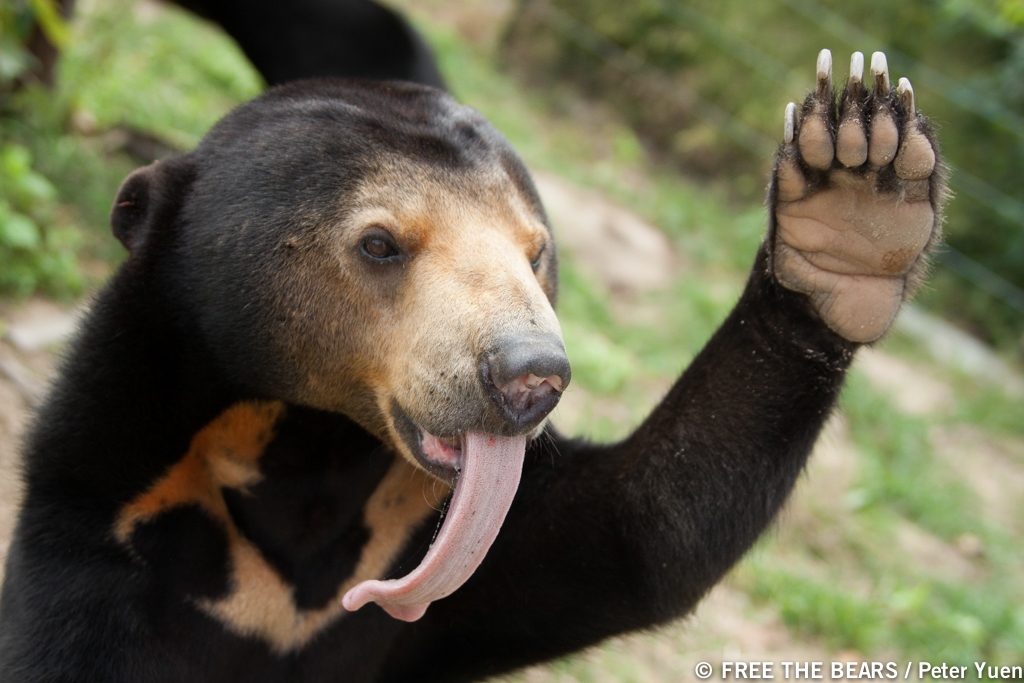
Sun bear_H malayanus_Cambodia Bear Sanctuary Cambodia_rescued from illegal trade_large naked paw long tongue_Free the Bears
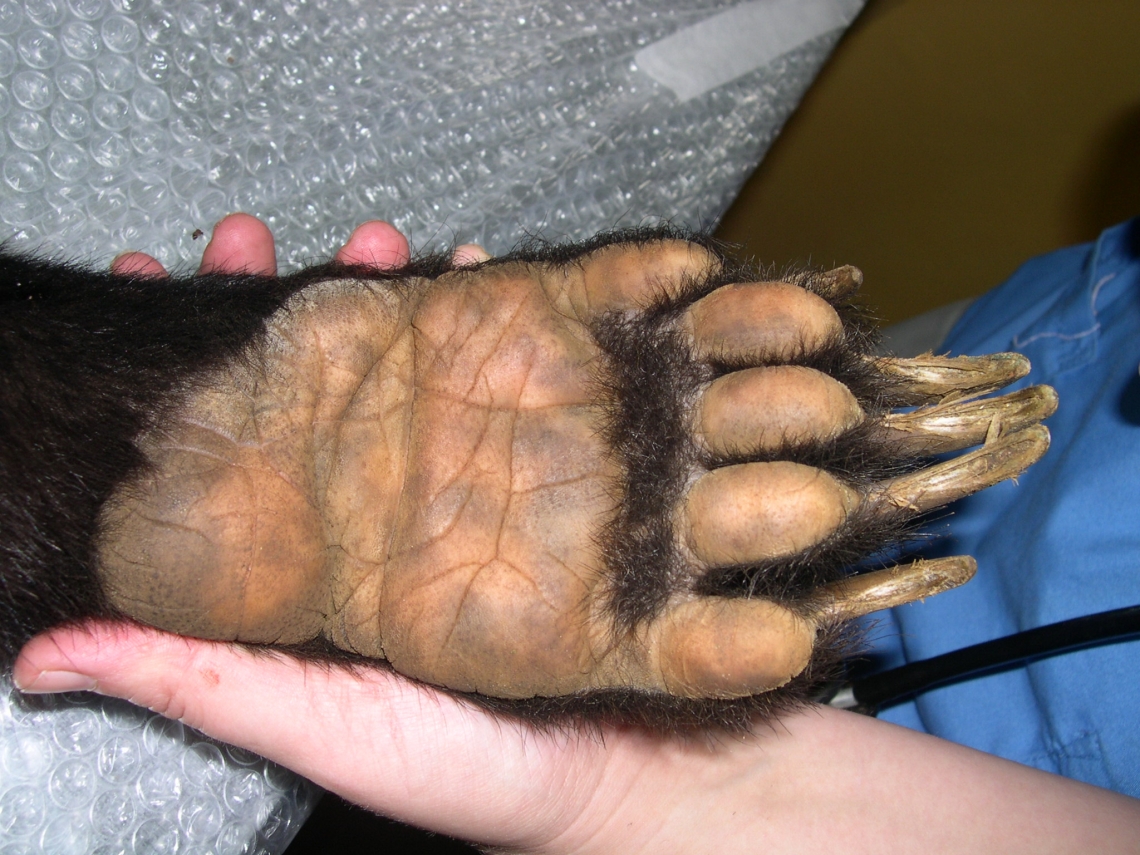
Sun bear_H malayanus_Kalimantan Indonesia_front foot with naked sole and long claws_G Fredriksson
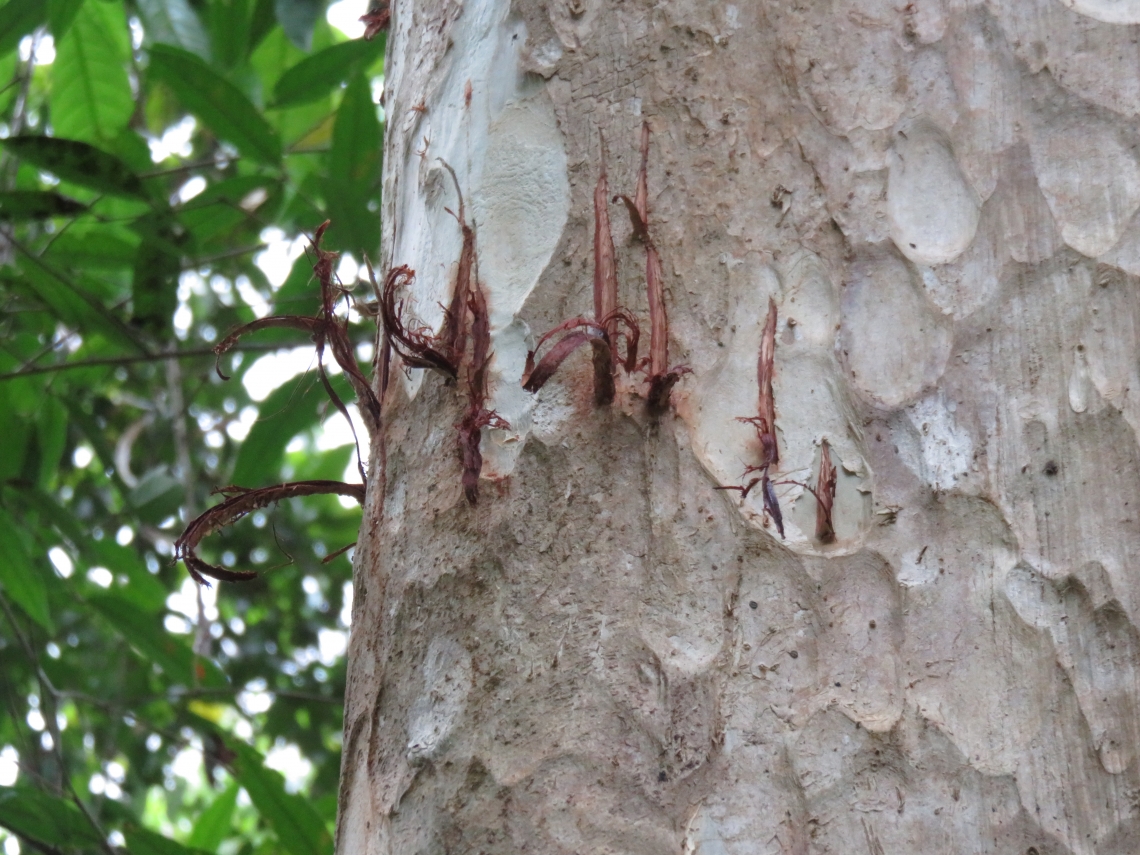
Sun bear_H malayanus_Northeast Cambodia_fresh bear claw marks on a tree_Free the Bears
Distinctive behaviors: Sun bears are well adapted to living in tropical forests. They are expert climbers: their large naked paws, long curved claws, and small, muscular bodies allow them to climb out on small branches to obtain fruit, or to spend many hours clinging to the side of trees while breaking into bees’ nests. They use their large canines to chew through the tree trunk to reach these bees’ nests. Their large feet and claws also help them dig into the ground and break into dead wood to search for insect food. Their relatively small body size and adaptable diet may allow sun bears some resilience in times of extreme food scarcity (i.e., between fruit-masting cycles). They are mostly diurnal and crepuscular, but can adjust their activity pattern to become nocturnal when living near human activity. When not foraging, sun bears like to sleep on fallen logs, on the branches of tall trees, or hidden in the crevices of hollow trunks. Their choice of sleeping site and body position while resting is important in helping them stay cool in a hot climate.
Sun bears are rarely seen in the wild. They are normally unaggressive toward people, but people have been attacked during sudden encounters with sun bears, including a few where injuries were fatal.
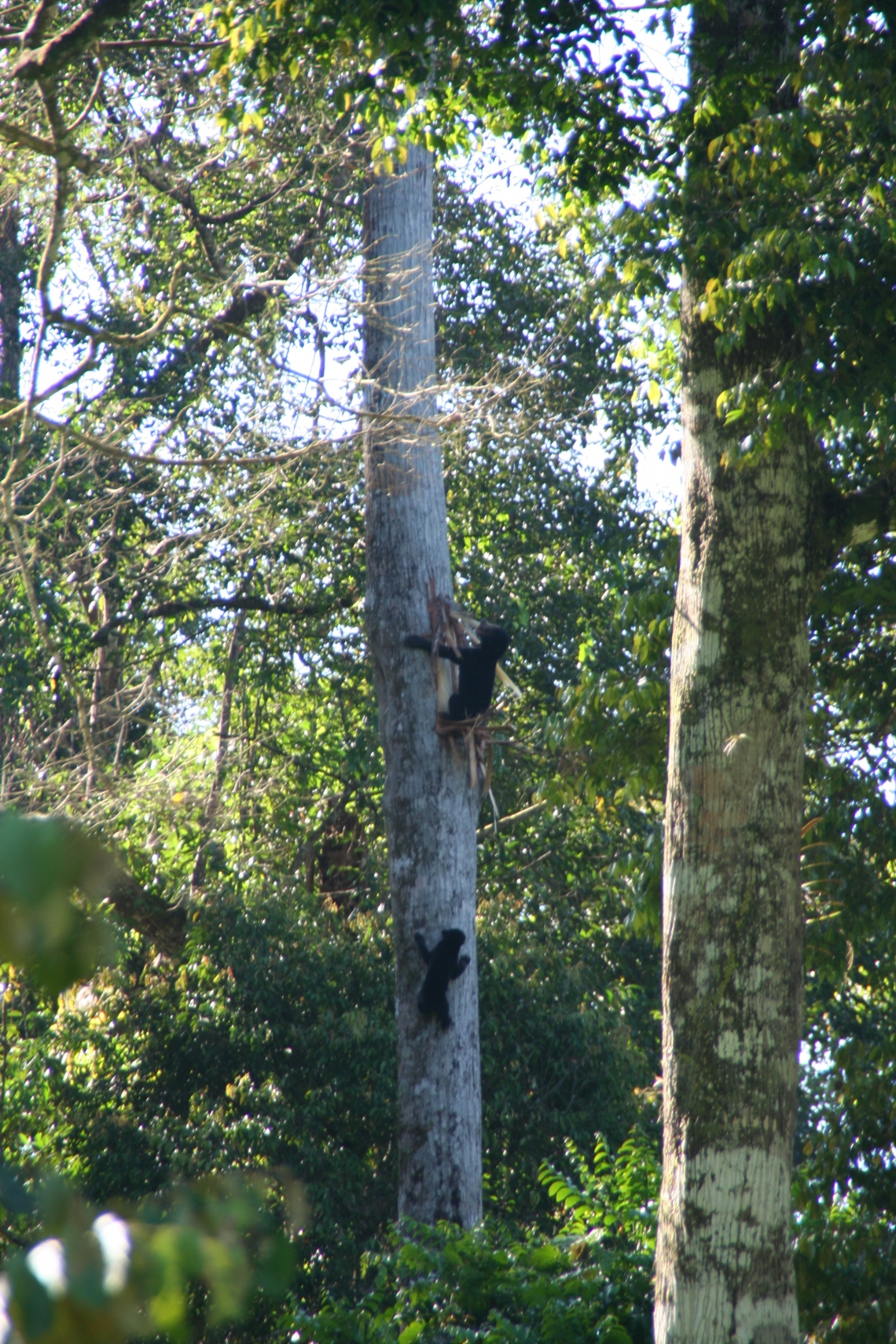
Sun bear_H malayanus_Sabah, Malaysia_mother and cub breaking into stingless bees nest_Wineke Schoo_1
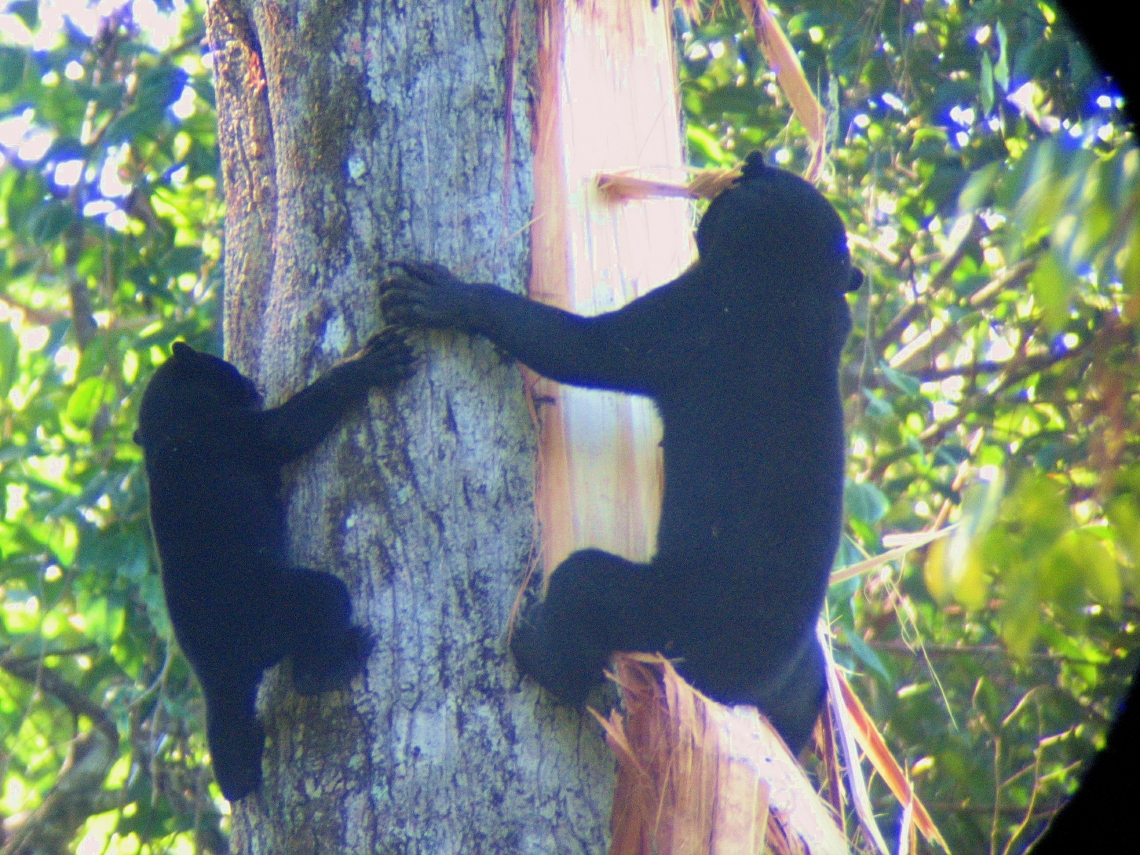
Sun bear_H malayanus_Sabah, Malaysia_mother and cub breaking into stingless bees nest_Wineke Schoo_2
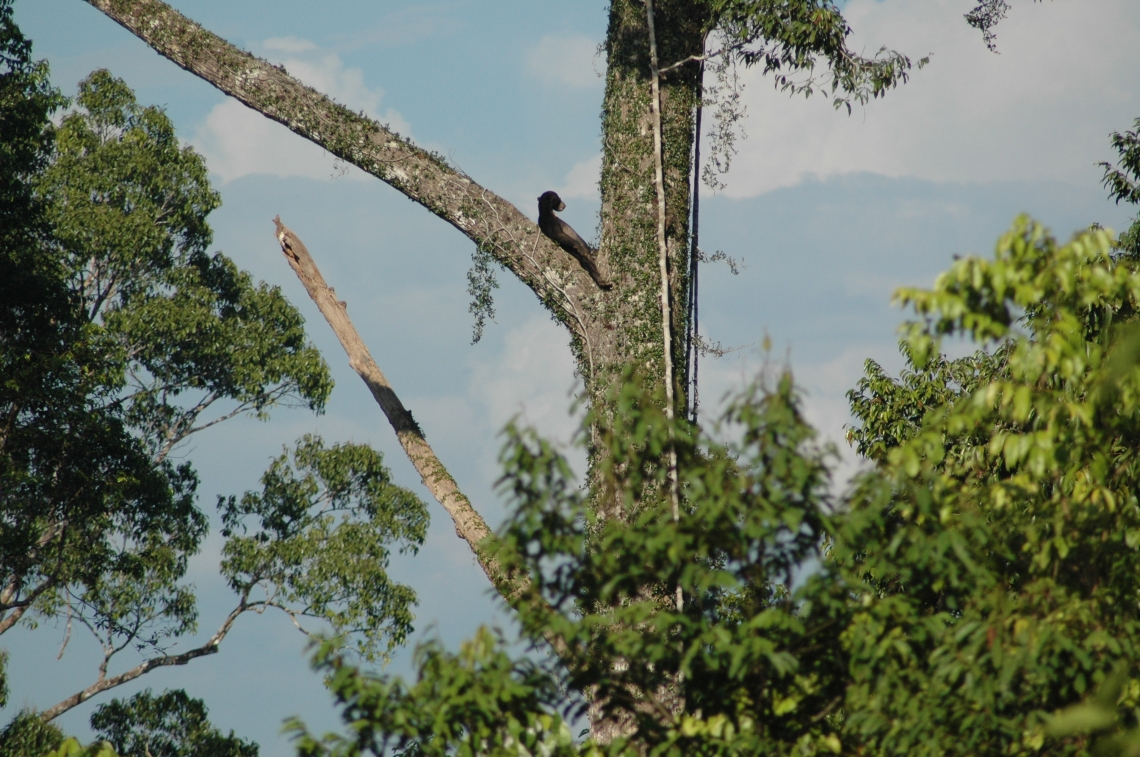
Sun bear_H malayanus_Kalimantan Indonesia_Resting on giant Dipterocarp tree branch_Chandra Dewana Boer
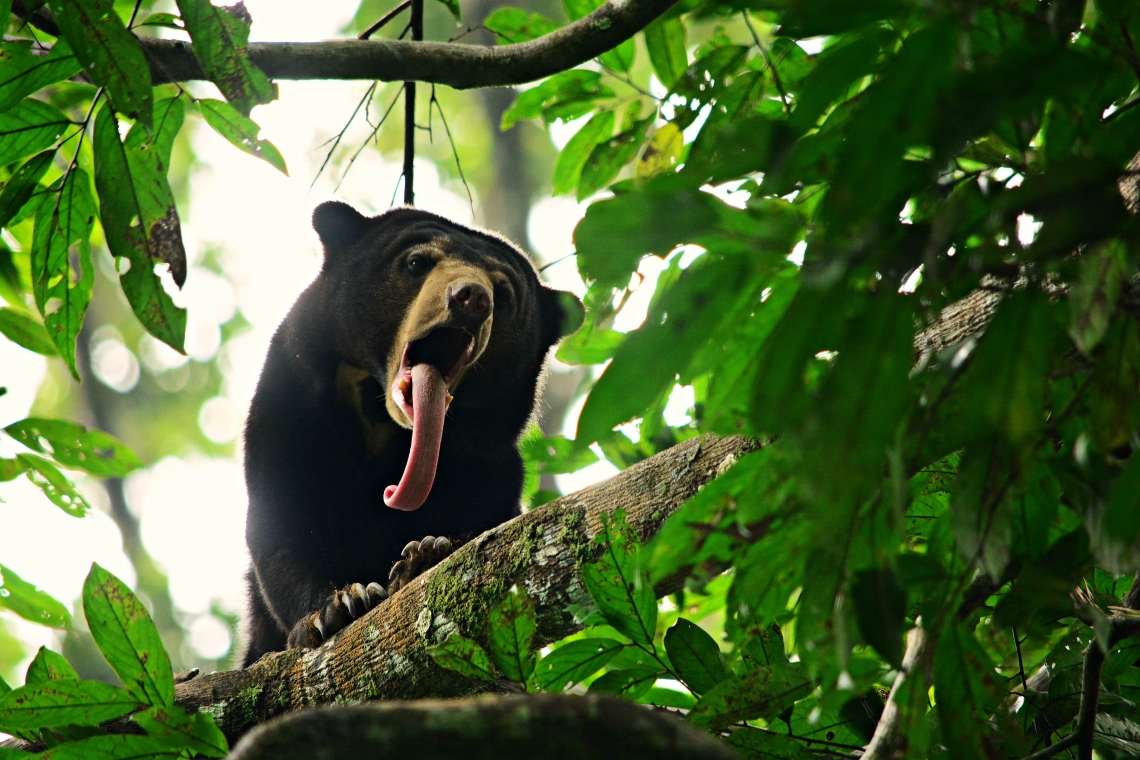
Sun bear_H malayanus_Sabah Malaysia_Borneo Sun Bear Conservation Center_walking on tree limb_Chiew Lin May
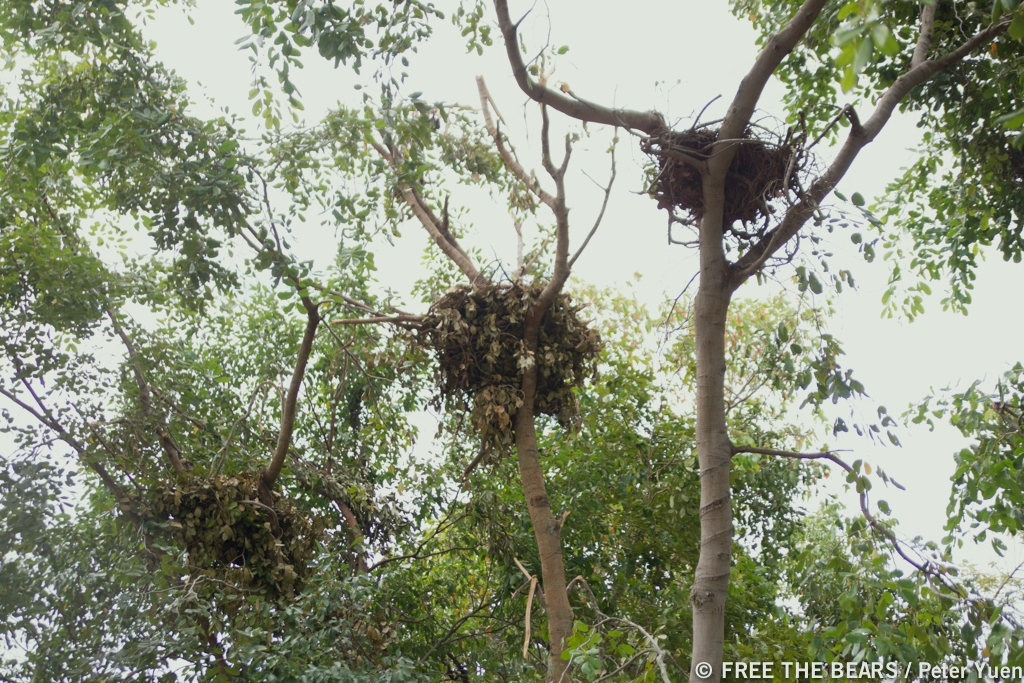
Sun bear_H malayanus_Cambodia Bear sanctuary Cambodia_Bear nests_Free the Bears
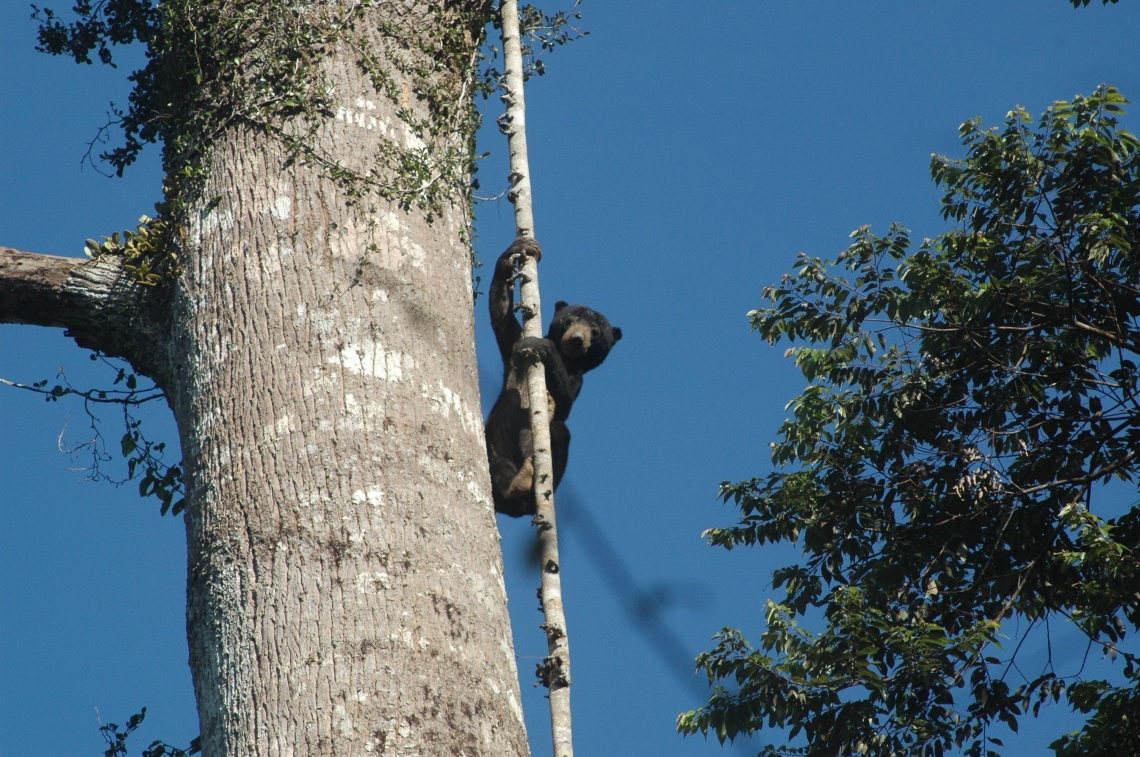
Sun bear_H malayanus_Kalimantan Indonesia_Climbing down fig root_Chandra Dewana Boer
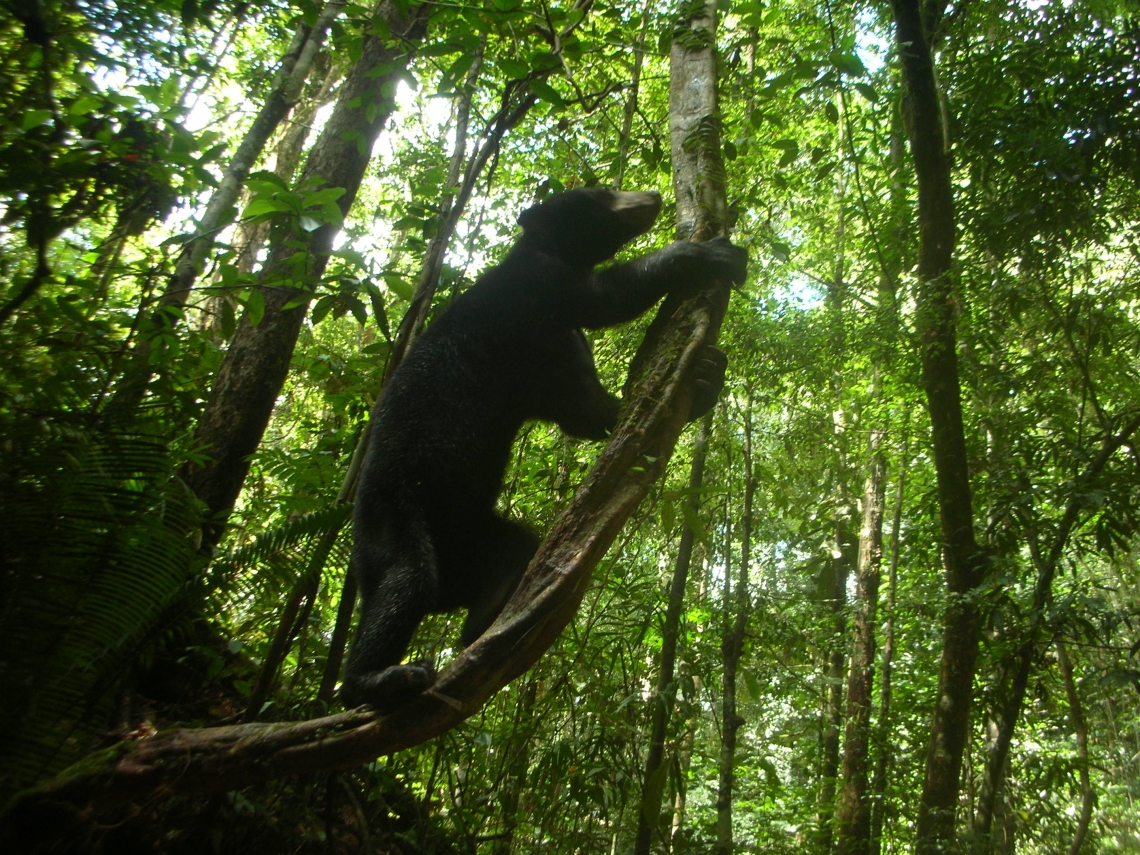
Sun bear_H malayanus_Kalimantan Indonesia_Climbing liana_G Fredriksson
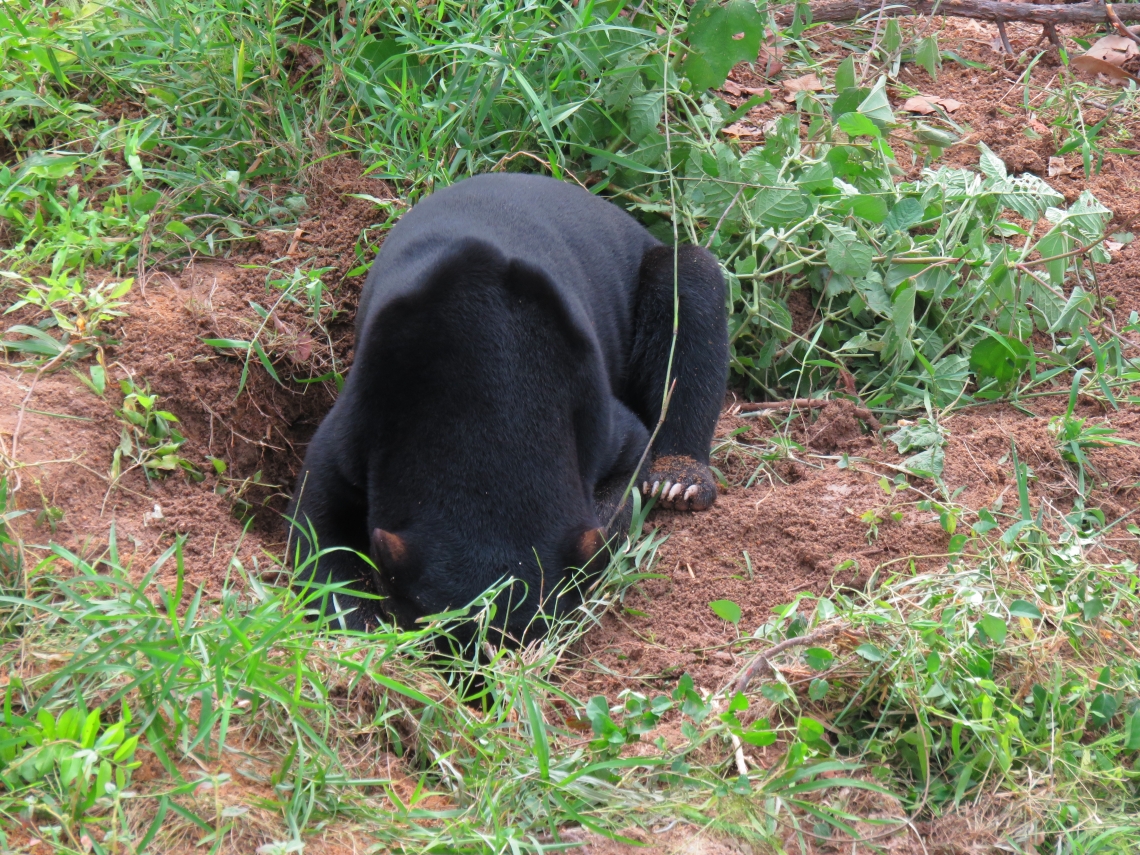
Sun bear_H malayanus_Cambodia Bear Sanctuary Cambodia_digging in the ground_Free the Bears
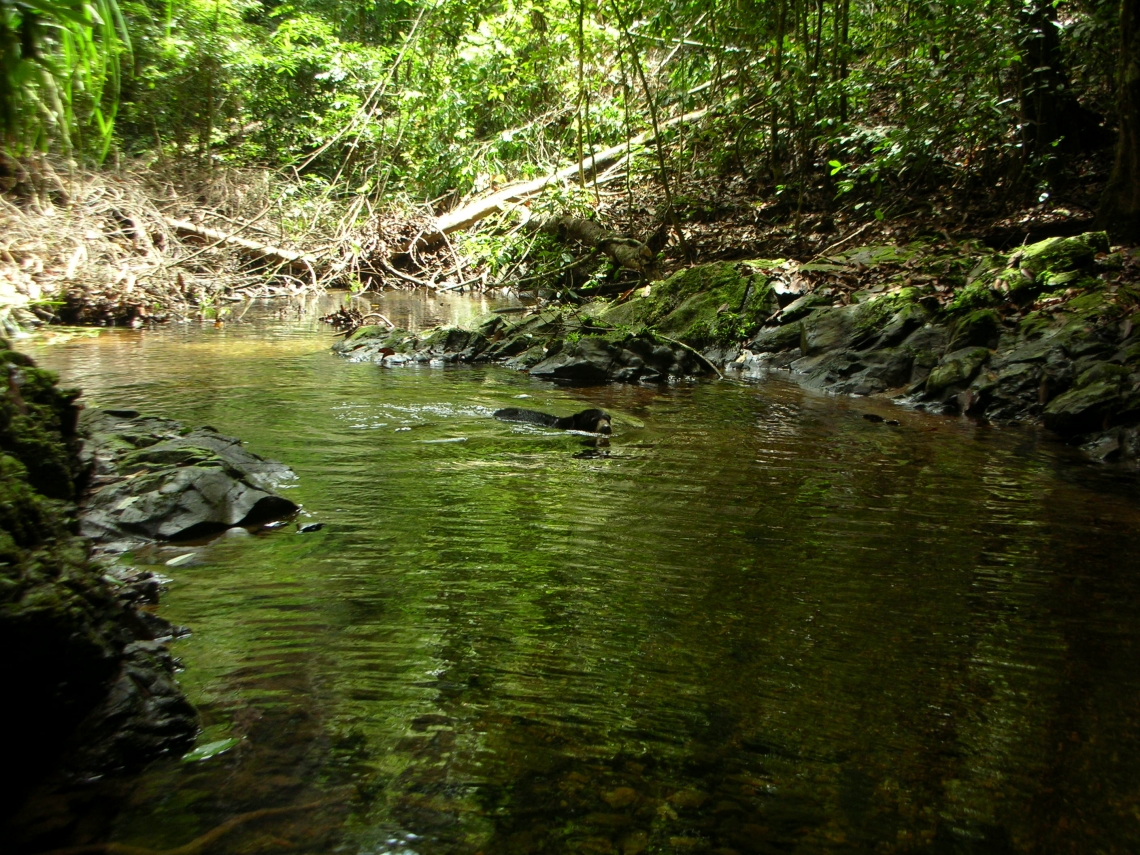
Sun bear_H malayanus_Kalimantan Indonesia_cooling off in water_Tim Anjari_G Fredriksson